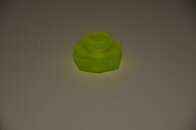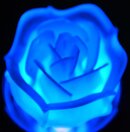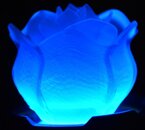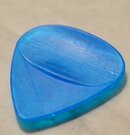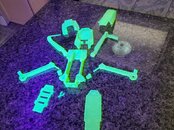I was chatting in another thread about 3d printing scuba gear. I just ordered an SLA printer named the Peopoly MOAI to print scuba gear among other things. Didn't want to take that thread over so I started my own. I'm being kind of verbose because several folks had questions.
The printer came in a kit for $1,400 from matterhackers.com. I ordered another$400 in extra stuff like resin. Resin is the raw material an SLA printer uses.. basically a liquid plastic that's cured to hardness with exposure to UV. The printer uses a UV laser to draw the slices in a vat of resin, and the print bed raises out of the vat with your printed part attached.
I'm not new to 3d printers, but I'm new to SLA. it took me a good 8 hours and 11 test prints to get the printer aligned correctly. That involves leveling the vat to within .3mm of a target by manually twisting four nuts. Test print, rinse (literally), repeat. Now it should not have taken me that long. I had mislabeled the corners of the vat, so my first 7 attempts were totally wasted. Attempt was a little better but I had designed a spreadsheet to help me manage the data and accidentally inverted my adjustment output (I raised the bed instead of lowering it). After getting that sorted out it took me 3 more attempts to get all four corners in the tolerable range.
It should have only taken 3 attempts. The documentation is quite ambiguous on which corner is what. I wish they had come labeled - nearly everything else came labeled.
The printer came in a kit for $1,400 from matterhackers.com. I ordered another$400 in extra stuff like resin. Resin is the raw material an SLA printer uses.. basically a liquid plastic that's cured to hardness with exposure to UV. The printer uses a UV laser to draw the slices in a vat of resin, and the print bed raises out of the vat with your printed part attached.
I'm not new to 3d printers, but I'm new to SLA. it took me a good 8 hours and 11 test prints to get the printer aligned correctly. That involves leveling the vat to within .3mm of a target by manually twisting four nuts. Test print, rinse (literally), repeat. Now it should not have taken me that long. I had mislabeled the corners of the vat, so my first 7 attempts were totally wasted. Attempt was a little better but I had designed a spreadsheet to help me manage the data and accidentally inverted my adjustment output (I raised the bed instead of lowering it). After getting that sorted out it took me 3 more attempts to get all four corners in the tolerable range.
It should have only taken 3 attempts. The documentation is quite ambiguous on which corner is what. I wish they had come labeled - nearly everything else came labeled.




